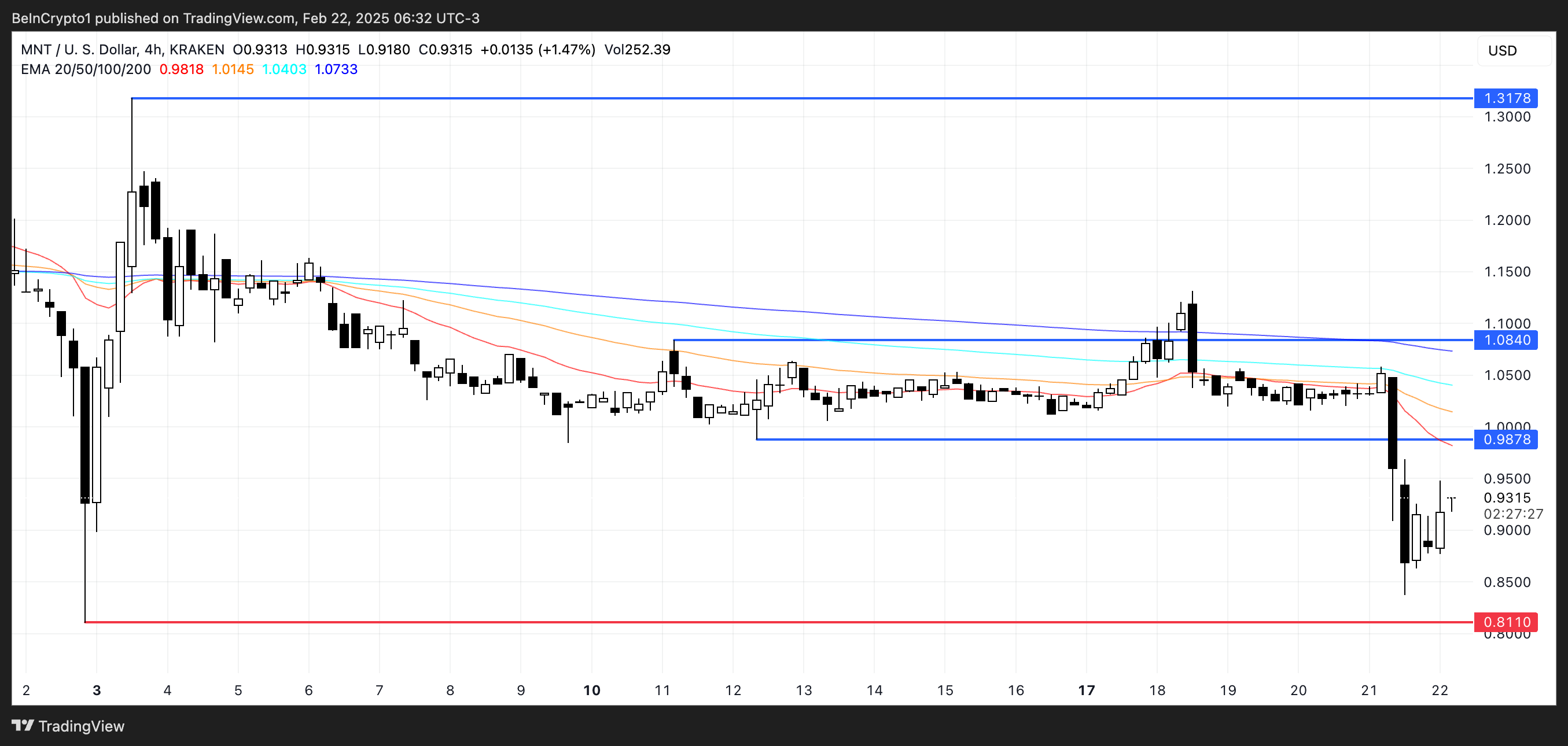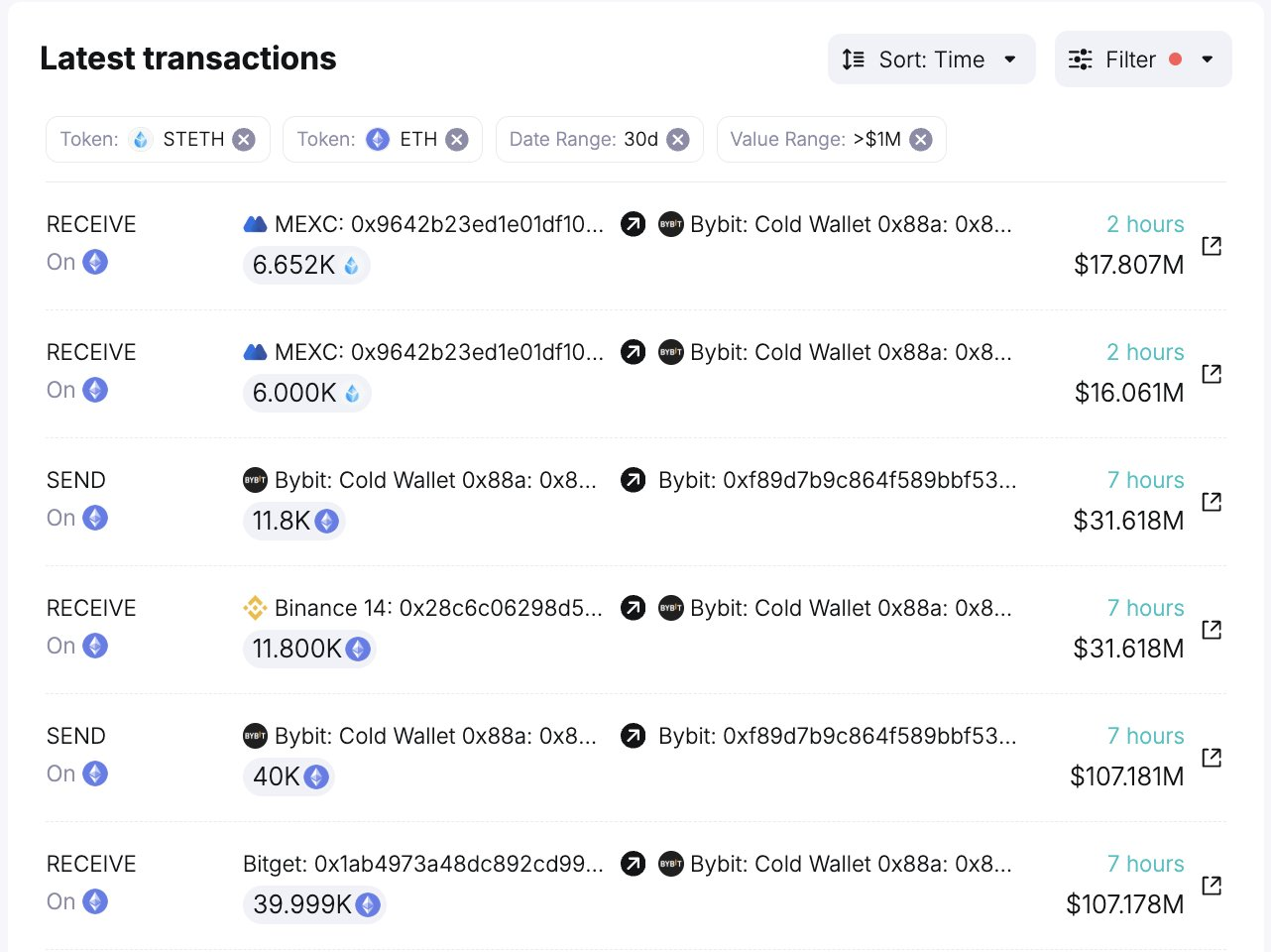Market
Binance.US Restores USD Deposits and Withdrawals for 10 Assets


Binance.US has restored USD deposits and withdrawals after almost 18 months of restrictions. The company announced on February 19 that US customers can once again deposit and withdraw dollars via bank transfer (ACH).
Users can now link their bank accounts to deposit or withdraw USD, purchase crypto using bank transfers, and trade on USD pairs. The service will gradually become available to all eligible customers in the coming days.
Why did Binance.US Suspend USD Deposits?
As USD services resume, Binance.US customers can now link their US bank accounts to the Binance account. They can buy and sell crypto directly using bank transfers.
As of now, only 10 cryptocurrencies can be traded directly using USD. This includes Bitcoin, Steller, Solana, Ethereum, Dogecoin, Hedera, Shiba Inu, Cardano, Sui, and BNB.
Binance.US suspended its USD deposit and withdrawal services following a high-profile SEC lawsuit and mounting regulatory pressure.
In June 2023, the SEC sued Binance.US for allegedly operating as an unregistered securities exchange, which led its banking partners to halt USD transactions.
Faced with this environment and to protect its customers, the platform shifted to a crypto-only model for certain regions.
Although trading and crypto-related functions continued, users could no longer directly deposit or withdraw USD until new, compliant banking partners were secured.
However, today’s resumption of USD deposits is likely driven by the pro-crypto regulatory changes in the US.
Disclaimer
In adherence to the Trust Project guidelines, BeInCrypto is committed to unbiased, transparent reporting. This news article aims to provide accurate, timely information. However, readers are advised to verify facts independently and consult with a professional before making any decisions based on this content. Please note that our Terms and Conditions, Privacy Policy, and Disclaimers have been updated.
Market
Mantle (MNT) Falls 10% as Bybit Hack Rattles Investors

Mantle (MNT) is down more than 10% following the Bybit hack, where roughly $174 million of cmETH – a Mantle-based coin providing liquidity for ETH in the MNT ecosystem – was stolen. The hack, linked to the North Korean Lazarus Group, triggered panic selling, causing MNT’s Relative Strength Index (RSI) to plummet to oversold levels.
Although MNT’s RSI has since rebounded to 39.9, it remains in bearish territory, reflecting cautious sentiment. Additionally, MNT’s Chaikin Money Flow (CMF) is trying to recover but is still deeply negative, while its Exponential Moving Average (EMA) lines suggest persistent downward momentum.
MNT RSI Touched Strong Oversold Levels After Bybit’s Hack
Mantle’s RSI dropped sharply from 54.7 to 22.9 within a few hours following the Bybit hack, where the North Korean hacking group Lazarus stole $1.5 billion, making it the biggest crypto hack ever. Among the assets stolen was cmETH, a Mantle-based coin providing liquidity for ETH in the MNT ecosystem.
This massive outflow of funds triggered panic selling, leading to a significant decline in MNT’s Relative Strength Index (RSI). RSI is a momentum oscillator that measures the speed and change of price movements, typically ranging from 0 to 100.
It is commonly used to identify overbought or oversold conditions, with values above 70 indicating overbought conditions and below 30 suggesting oversold territory. Mantle’s RSI plummeting to 22.9 signaled extreme overselling, reflecting intense bearish sentiment amid the fallout from the hack.

Following this sharp decline, Mantle’s RSI has rebounded to 39.9, showing signs of recovery in the last few hours. An RSI below 30 generally indicates that an asset is oversold and could be due for a price bounce as selling pressure wanes.
Now, with RSI approaching the neutral zone (30-50 range), it suggests that the extreme selling momentum has eased, potentially attracting bargain-hunters or bottom-fishers. If RSI continues to rise, it could indicate growing bullish momentum and a possible reversal in MNT’s price trend.
However, if RSI fails to break above the 50 threshold, it could signify continued uncertainty and a lack of buying strength, leaving MNT vulnerable to further downside risk.
Mantle CMF Is Trying to Recover, But It’s Still Very Negative
MNT’s Chaikin Money Flow (CMF) was already in negative territory before the Bybit hack, reflecting a bearish trend and selling pressure. However, following the hack, MNT’s CMF plunged even further, reaching a negative peak of -0.35 yesterday.
CMF is an indicator that measures the volume-weighted average of accumulation and distribution over a set period. It ranges from -1 to 1, with positive values suggesting buying pressure and accumulation, while negative values indicate selling pressure and distribution.
The sharp decline to -0.35 signaled intense outflows from Mantle. That confirms significant selling momentum amid the heightened market fear and uncertainty triggered by the hack.

After reaching this negative peak, MNT’s CMF has started to recover, currently sitting at -0.24. Although still far from turning positive, this upward movement suggests that selling pressure is gradually easing.
A rising CMF, even while negative, can indicate that bearish momentum is losing steam. If buying volume continues to increase, that could potentially pave the way for a price stabilization or even a reversal. However, as long as CMF remains in negative territory, MNT price is likely to face resistance.
A shift to positive CMF would be a more convincing sign of bullish sentiment returning. That could signal a stronger likelihood of a price recovery.
Mantle Dropped Below $1 For the First Time Since Early February
MNT’s Exponential Moving Average (EMA) lines are currently very bearish, with all short-term EMAs below the long-term ones. This setup indicates strong downward momentum, as recent prices are weaker compared to historical trends.
If this bearish trend continues, MNT could test the support at $0.81.

On the other hand, if Mantle starts to recover from the recent drop, it could test the resistance at $0.98. If this level is broken, the next target would be $1.08.
A strong uptrend could push MNT to $1.31, representing a potential 41% upside. However, for this bullish scenario to unfold, short-term EMAs would need to cross above long-term ones, signaling renewed buying momentum.
Disclaimer
In line with the Trust Project guidelines, this price analysis article is for informational purposes only and should not be considered financial or investment advice. BeInCrypto is committed to accurate, unbiased reporting, but market conditions are subject to change without notice. Always conduct your own research and consult with a professional before making any financial decisions. Please note that our Terms and Conditions, Privacy Policy, and Disclaimers have been updated.
Market
Bybit Assures Stability Amid $5.2 Billion Asset Outflow After Hack

Bybit has seen a sharp decline in its asset reserves, losing over $5 billion within 24 hours after suffering a $1.5 billion hack.
Despite the setback, the exchange’s crisis management has drawn widespread praise from industry leaders.
Massive Withdrawals Test Bybit’s Stability
Data from DeFiLlama shows Bybit’s reserves shrank by approximately $5.2 billion within 24 hours. Despite the drop, on-chain data confirms that the exchange still holds more than $11.4 billion in assets.

The plunge followed a surge in withdrawal requests, with over 350,000 transactions flooding the platform. Bybit CEO Ben Zhou stated that employees worked overnight to process the backlog. He later assured users that withdrawals had returned to normal.
“12 hr from the worst hack in history. All withdraws have been processed. Our withdraw system is now fully back to normal pace, you can withdraw any amount and experience no delays. All Bybit functions and product remain functional, the Whole team had been awake all night to process and answer client questions and concerns,” Zhou added.
Meanwhile, Bybit secured $172.5 million in emergency loans within seven hours to reinforce its reserves. Blockchain analytical firm SpotOnChain reported that the funds came from multiple platforms, including Binance, Bitget, and MEXC.

On February 21, a security breach compromised Bybit’s Ethereum multisig cold wallet. According to Zhou, the attack stemmed from a disguised transaction that moved funds from a cold wallet to a warm wallet, granting unauthorized access to the hacker.
Unlike many exchanges that freeze withdrawals after an attack, Bybit allowed transactions to continue, preventing widespread panic among users.
Industry Applauds Bybit’s Response
Bybit’s swift and transparent handling of the crisis has drawn praise from key industry figures.
Dragonfly’s global support lead, Casey Taylor, called the exchange’s response a “masterclass in crisis communication.” Taylor highlighted how Zhou personally addressed the situation within 30 minutes of the first public report, preventing market speculation.
“ByBit’s response was fast, transparent, and well-executed… instead of just reacting, they executed a playbook. The result is clear—people believed this was handled masterfully,” Taylor explained.
Guy Young, founder of Ethena Labs, echoed this sentiment, describing Bybit’s crisis management as an industry benchmark.
“Don’t think I’ve ever seen a team handle crisis communications as well as they did. Stood up to face the music immediately to provide transparent answers to the community. An example for us all to look up to,” Young remarked.
Austin Federa, co-founder of Double Zero, also praised the exchange for its quick and transparent approach. He emphasized that traditional crisis management tactics often fail in Web3, making Bybit’s response a model for others.
“These situations are extremely hard but [ByBit] team responded quickly, with empathy, and with the facts they knew to be true…The only strategy in web3 is transparency, humility, and clarity,” Federa stated.
Reports confirmed that North Korea’s infamous Lazarus Group carried out the Bybit hack. Recovering such enormous funds would be difficult, especially from a nation-state actor like Lazarus.
Disclaimer
In adherence to the Trust Project guidelines, BeInCrypto is committed to unbiased, transparent reporting. This news article aims to provide accurate, timely information. However, readers are advised to verify facts independently and consult with a professional before making any decisions based on this content. Please note that our Terms and Conditions, Privacy Policy, and Disclaimers have been updated.
Market
FTX Survey Shows Crypto ReInvestment and Possible Bias

According to a new survey of FTX creditors, 79% plan to reinvest their payments into crypto. More than half of them plan to buy Solana, and meme coins and AI tokens are also popular.
However, a deeper look into the survey’s methodology suggests a strong bias toward Solana enthusiasts. While some participants may have a genuine interest in other assets, their preferences might not reflect the broader sentiment of all FTX creditors.
FTX Creditors are Likely to Reinvest Funds into Crypto
Since the FTX collapse in 2022, the residual fallout has left deep marks on the crypto space. Earlier this month, liquidators announced that creditors would start getting reimbursed on February 18. Although this caused bullish hype beforehand, market hopes sank when investors began acting skittishly.
However, a new survey claims that most FTX creditors will reinvest in crypto:
“79% of FTX creditors plan to reinvest their repayments into cryptocurrencies, with an average of 29% of their repayment funds allocated for this purpose. 62% intend to buy Solana. One-third of FTX creditors plan to allocate their repayments toward meme coins, and 31% of creditors are prioritizing AI-related cryptocurrencies,” its results claim.
On the surface, this FTX survey looks very bullish, especially for Solana. When the reimbursements began, the exchange’s creditors showed a strong propensity to secure their funds immediately.
However, if these results are accurate, it would be a shot in the arm for several assets. Solana, in particular, has suffered a difficult month and could greatly benefit from fresh investors.

Unfortunately, however, this bullish vision may not materialize. In its methodology, the FTX survey acknowledged that “there is a possibility of biases.”
Apparently, creditors were only eligible if at least 10% of their portfolio consisted of Solana or if they held $100 worth of SOL for over a year. In other words, it seems obvious that eligible participants would be interested in Solana.
Even if the FTX survey is biased in this regard, its data may still be useful in other ways. For example, meme coins have had a tough time in February, and the AI crypto market isn’t looking much better.
If some of these Solana enthusiasts spend their reimbursements on these tokens, it could be a lifeline. However, it’s not a good barometer for the broad pool of FTX creditors.
Disclaimer
In adherence to the Trust Project guidelines, BeInCrypto is committed to unbiased, transparent reporting. This news article aims to provide accurate, timely information. However, readers are advised to verify facts independently and consult with a professional before making any decisions based on this content. Please note that our Terms and Conditions, Privacy Policy, and Disclaimers have been updated.
-

 Regulation23 hours ago
Regulation23 hours agoCoinbase scores major win as SEC set to drop lawsuit
-

 Market19 hours ago
Market19 hours agoWhat It Means for the XRP Lawsuit
-

 Ethereum19 hours ago
Ethereum19 hours agoExtremely Strong Support And Monthly 55 EMA Says ETH Is Headed For $4,867
-

 Market18 hours ago
Market18 hours agoPI Surges, CZ Comments, Safe Denies Breach
-

 Regulation24 hours ago
Regulation24 hours agoUS SEC Agrees To Drop Lawsuit Against Coinbase
-

 Regulation18 hours ago
Regulation18 hours agoConsenSys Submits Letter to SEC on DeFi Rule Amendment Concerns
-

 Market23 hours ago
Market23 hours agoCardano Breakout Hints at Strong Recovery Ahead
-

 Market22 hours ago
Market22 hours agoShiba Inu’s December 2024 Downtrend Could End As Inflows Rise
























